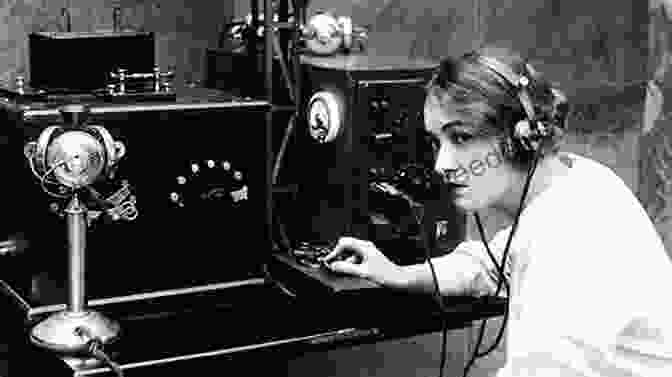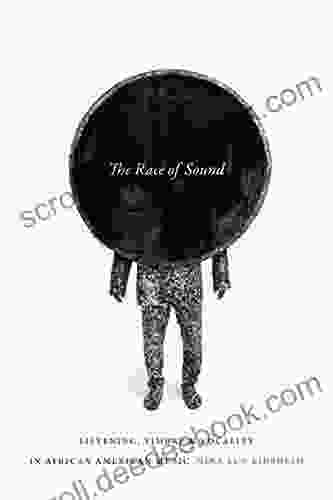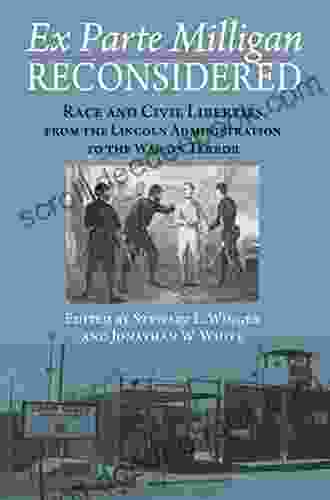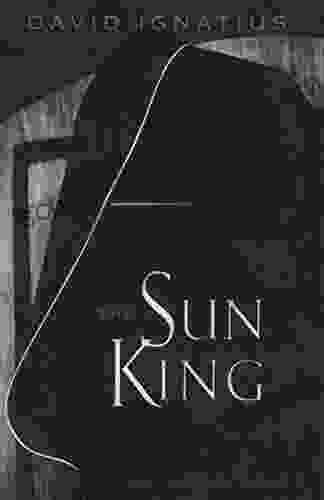The Race Of Sound: A Historical Overview of the Acoustic Telegraph


The development of the acoustic telegraph marked a pivotal moment in the history of communication. This innovative technology, which employed sound waves to transmit messages over long distances, paved the way for advancements in telegraphy and laid the groundwork for modern communication systems. In this comprehensive article, we will embark on a journey through the fascinating history of the acoustic telegraph, exploring the individuals who played pivotal roles in its development, the technological breakthroughs that shaped its evolution, and the impact it had on society.
5 out of 5
| Language | : | English |
| File size | : | 30198 KB |
| Text-to-Speech | : | Enabled |
| Screen Reader | : | Supported |
| Enhanced typesetting | : | Enabled |
| Word Wise | : | Enabled |
| Print length | : | 273 pages |
The Pioneers
The quest to harness the power of sound for communication began in the early 19th century. Among the notable pioneers who dedicated their efforts to this pursuit were:
- Charles Wheatstone (1802-1875): An English physicist and inventor, Wheatstone is widely recognized as one of the fathers of telegraphy. He made significant contributions to the development of the acoustic telegraph, designing an acoustic telegraph system that utilized a series of compressed air tubes to transmit messages.
- Alexander Graham Bell (1847-1922): A Scottish-born scientist and inventor, Bell is best known for his invention of the telephone. Prior to his work on the telephone, Bell conducted extensive research on the transmission of sound waves, which formed the foundation for his later invention.
- Reuben Williams (1828-1890): An American inventor, Williams is credited with designing and constructing the first practical acoustic telegraph system in 1858. His system, which was used by the Union Army during the American Civil War, played a crucial role in communication during the conflict.
Technological Advancements
The development of the acoustic telegraph required significant technological advancements. Key breakthroughs included:
- Compressed Air Tubes: The use of compressed air tubes allowed sound waves to be transmitted over long distances. Wheatstone's acoustic telegraph system employed a network of compressed air tubes, which were laid underground or suspended from poles.
- Diaphragms and Resonators: Diaphragms, which are thin membranes that vibrate when exposed to sound waves, were used to convert sound waves into electrical signals. Resonators, which are devices that amplify specific frequencies, were employed to enhance the transmission of sound waves.
- Acoustic Couplers: Acoustic couplers were developed to connect acoustic telegraph systems to telephone networks. This enabled the transmission of messages over both acoustic and electrical networks, extending the reach of communication.
Applications and Impact
The acoustic telegraph had a wide range of applications, including:
- Military Communication: During the American Civil War, the acoustic telegraph played a vital role in communication between Union Army units. The ability to transmit messages quickly and securely over long distances proved invaluable for coordinating military operations.
- Commercial Communication: The acoustic telegraph was also used for commercial purposes, such as transmitting stock market information and financial transactions. Its use in the business world facilitated faster and more efficient communication, contributing to economic growth.
- Scientific Research: The acoustic telegraph served as a valuable tool for scientific research. Scientists used it to study the transmission of sound waves, leading to advancements in acoustics and telecommunications.
Decline and Legacy
Despite its initial success, the acoustic telegraph gradually declined in popularity as electrical telegraphy became more widespread. Electrical telegraphs offered several advantages over acoustic telegraphs, including faster transmission speeds, greater reliability, and the ability to transmit messages over longer distances.
However, the legacy of the acoustic telegraph remained. It paved the way for the development of more advanced communication technologies, such as the telephone and the telegraph. Its principles of sound transmission continue to be applied in modern communication systems, including underwater acoustics and sonar.
The acoustic telegraph was a technological marvel that revolutionized communication in the 19th century. The pioneering efforts of individuals like Wheatstone, Bell, and Williams laid the foundation for this innovative technology, which played a pivotal role in military, commercial, and scientific endeavors. Its legacy continues to shape modern communication systems, serving as a reminder of the ingenuity and determination that have driven advancements in communication throughout history.
5 out of 5
| Language | : | English |
| File size | : | 30198 KB |
| Text-to-Speech | : | Enabled |
| Screen Reader | : | Supported |
| Enhanced typesetting | : | Enabled |
| Word Wise | : | Enabled |
| Print length | : | 273 pages |
Do you want to contribute by writing guest posts on this blog?
Please contact us and send us a resume of previous articles that you have written.
 Page
Page Chapter
Chapter Text
Text Story
Story Library
Library Paperback
Paperback E-book
E-book Magazine
Magazine Newspaper
Newspaper Paragraph
Paragraph Sentence
Sentence Bibliography
Bibliography Preface
Preface Synopsis
Synopsis Annotation
Annotation Footnote
Footnote Scroll
Scroll Codex
Codex Bestseller
Bestseller Library card
Library card Biography
Biography Memoir
Memoir Reference
Reference Encyclopedia
Encyclopedia Narrator
Narrator Character
Character Resolution
Resolution Catalog
Catalog Borrowing
Borrowing Stacks
Stacks Archives
Archives Periodicals
Periodicals Academic
Academic Special Collections
Special Collections Interlibrary
Interlibrary Thesis
Thesis Dissertation
Dissertation Storytelling
Storytelling Awards
Awards Reading List
Reading List David L Newman
David L Newman Vincent Callegari
Vincent Callegari Dalton Mullins
Dalton Mullins Trisha David
Trisha David Lesley Gill
Lesley Gill Kindle Edition
Kindle Edition Marcus Monteiro
Marcus Monteiro Terezia Koronkay
Terezia Koronkay Lindsey Brackett
Lindsey Brackett Tom Hopkins
Tom Hopkins David James
David James Bruce E Stewart
Bruce E Stewart Geoffrey Prince
Geoffrey Prince Nikki Sloane
Nikki Sloane Jeetendr Sehdev
Jeetendr Sehdev Irene Shaland
Irene Shaland Jane Hirshfield
Jane Hirshfield Barnaby Taylor
Barnaby Taylor Tanisha Stewart
Tanisha Stewart Susan Power
Susan Power
Light bulbAdvertise smarter! Our strategic ad space ensures maximum exposure. Reserve your spot today!

 Henry Wadsworth LongfellowExploring the Profound Insights of Tommy Koh: A Journey Through His Favourite...
Henry Wadsworth LongfellowExploring the Profound Insights of Tommy Koh: A Journey Through His Favourite... Tony CarterFollow ·7.2k
Tony CarterFollow ·7.2k Casey BellFollow ·13.5k
Casey BellFollow ·13.5k Roberto BolañoFollow ·2.9k
Roberto BolañoFollow ·2.9k Juan RulfoFollow ·6.7k
Juan RulfoFollow ·6.7k George BellFollow ·8.6k
George BellFollow ·8.6k Junot DíazFollow ·11.2k
Junot DíazFollow ·11.2k Sidney CoxFollow ·3.7k
Sidney CoxFollow ·3.7k Henry HayesFollow ·19.9k
Henry HayesFollow ·19.9k

 Howard Powell
Howard PowellDk Workbooks Science Third Grade: An In-Depth Exploration...
Science education plays a...

 Everett Bell
Everett BellLearn to Play Bluegrass Dobro Guitar: A Comprehensive...
: Bluegrass Dobro, A Story of...

 Jeffrey Cox
Jeffrey CoxHow the Raccoon Got His Mask
The raccoon, with its...

 George Bell
George BellHannah Meets Ruby Hannah Out West: An Adventure-Filled...
Hannah Meets...
5 out of 5
| Language | : | English |
| File size | : | 30198 KB |
| Text-to-Speech | : | Enabled |
| Screen Reader | : | Supported |
| Enhanced typesetting | : | Enabled |
| Word Wise | : | Enabled |
| Print length | : | 273 pages |














